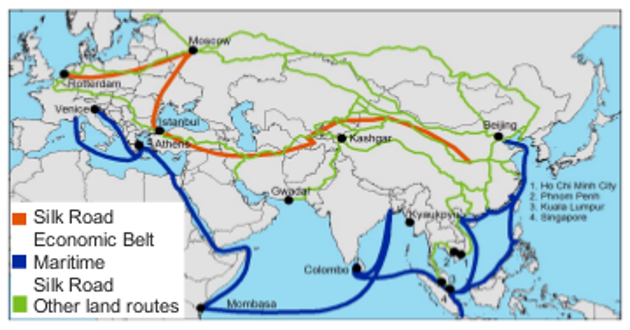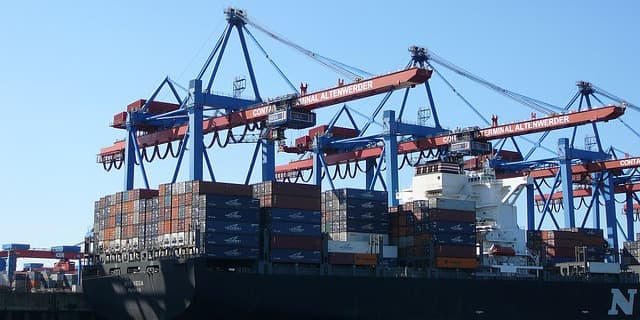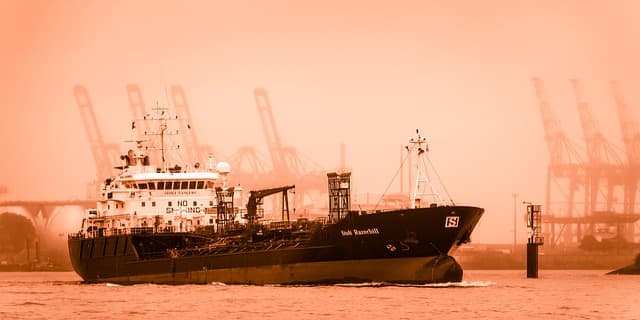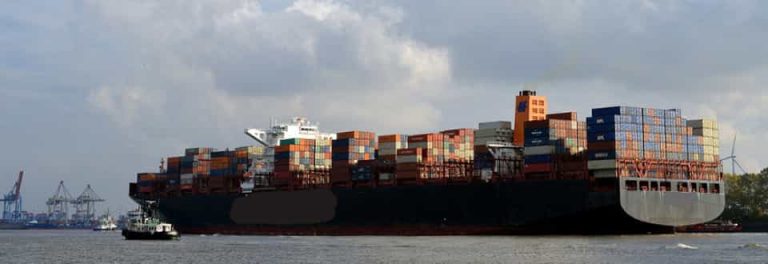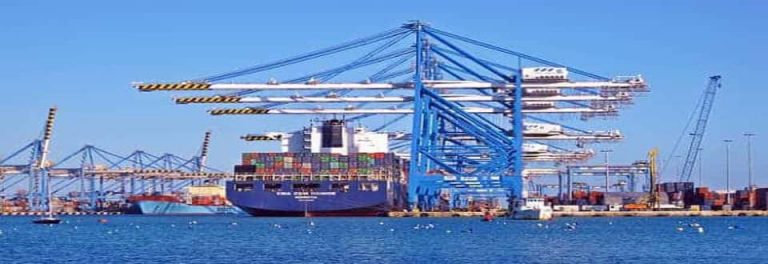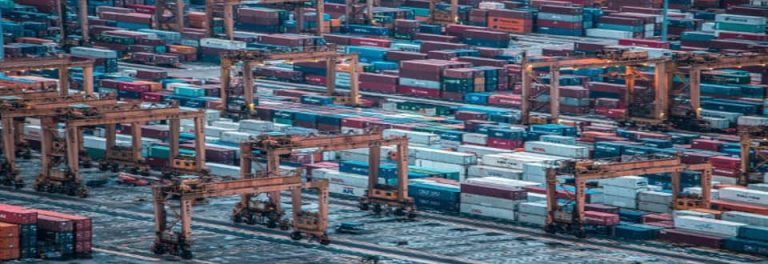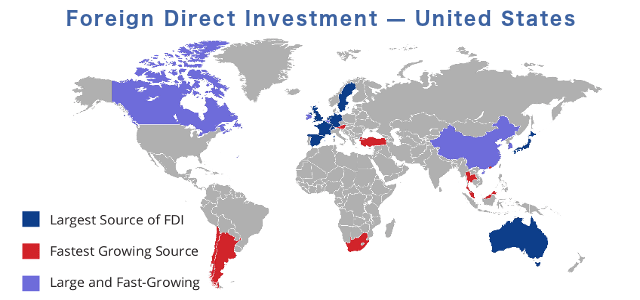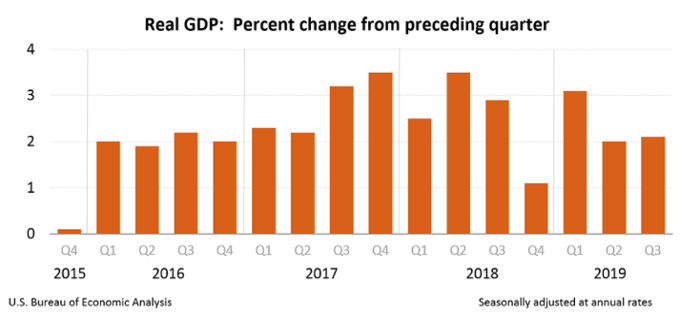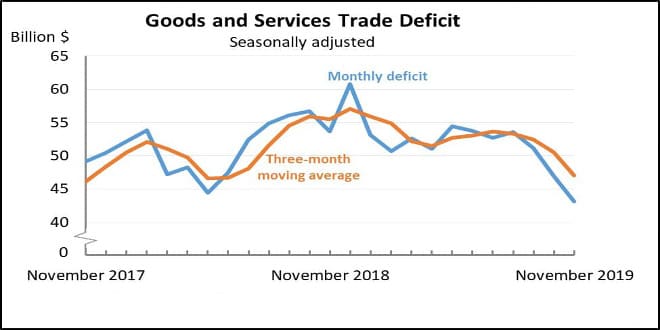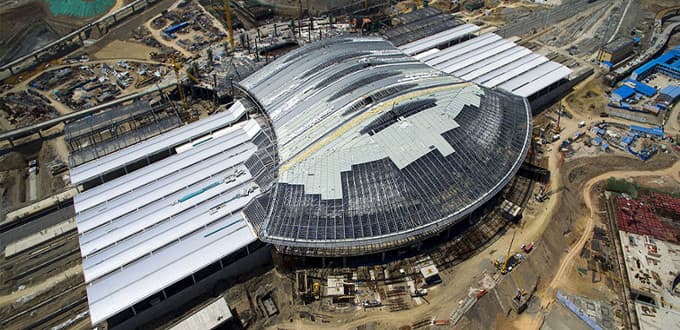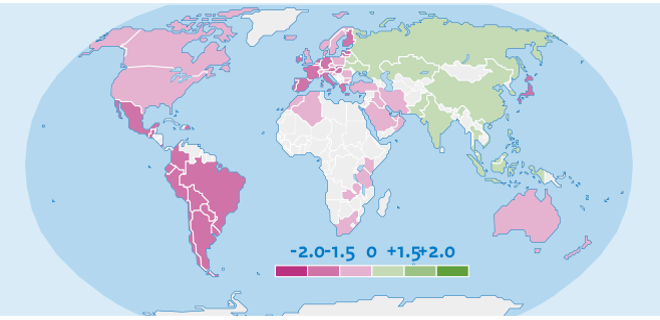The Logistics of Global Trade & CommerceSmooth Flow of Goods & Merchandise
Global Business | Supply Chain & Logistics

The reality is that 99% of businesses all across the world are out of the global market. It means—extrapolating it across the board, businesses leave most of the money on the table.
It is the Era of Global Business. Technology has brought even the far-flung regions of the world closer. World indeed seems a lot smaller. But, still, a very tiny percentage of businesses even consider selling their product internationally.
For example; out of more than 30 million businesses in the US only 1% sell their products or services internationally. The percentage of businesses that participate in the global market is even lower in most other countries.
The global population is over 7.5 billion people, and, according to market research firm eMarketer, the global e-commerce sales are expected to hit over $3.5 trillion in 2019. Citing the example of the US that has a population of slightly less than 325 million, by not selling globally the businesses miss out on a very large commercial potential on the table.
This means 99% of businesses all across the world are out of the global market. In a normal course of business, a loss of such a large share of market is unacceptable to any business that has plans for growth.
International consumer markets all across the world—in particular in China and the surrounding economies, are growing at a very fast rate. The driving force of this phenomenon growth in consumption is, of course, the dramatic rise in disposable income of the population.
The e-commerce (or the online commerce), is taking the lion’s share of this growing consumption economy. Global e-Commerce sales grew 18% to US $ 2.8 trillion in 2018. It is projected to hit the US $6 trillion by the year 2022.
With the availability of technology and so many global eCommerce platforms like, Ali Baba (with its array of subsidiaries and other arms like AliExpress, Paytm, Tmall, Taobao Global)—with penetration into 150 plus countries, JD.com (Jingdong), Tancent, Kaola, Lazada, WooCommerce (WordPress plugin), BigCommerce, VTEX, and Shopify etc. etc., it has become much more easier to sell products and services online—Globally.
In China—the fastest growing e-commerce economy in the world, the e-commerce market is expected to grow 30% annually to nearly $2.3 trillion in 2019. Meanwhile, the US could see a 15% growth over 2018 to $600 billion.
The Logistics of Going Global
For a business the idea of going global is both exciting and profitable. There are tremendous potentials for growth. But, at the same time, doing business cross-border needs doing some ground works.
Business need to understands the rules, regulations, requirements, and procedures of both the home country and the destination economy. Beside that, there are the logistics of packaging, shipping, warehousing, distribution, selling, and accepting the payments to think about.
The logistics of the shipping and fulfillment in itself is major factor that influence both the costs of operation and customer satisfaction. Here businesses have to consider the logistics of shipping to countries with different rules and requirements, declarations, customs, duties, and the associated paperwork—And, before that, the paperwork needed in getting the export clearance to ship the goods abroad.
Payment Methods and Technologies
The final – and most important, part for a business is to receive payments for the goods and services sold. In a local economy, it is not an issue—Cash or Credit, bot are OK. But, selling and collecting receipts in foreign markets require requires tackling a few more issues like having bank accounts in destination countries, currency conversions, and transfer of funds back to home country’s bank accounts.
Selling internationally further requires a payment processing platform to support local payments. Of course, the considerations of bank account and currencies options, which vary by country are still to be tackles.
But, with the globalization of business and eCommerce, there are a numbers of services that provide solutions to the payment problem. Utilizing the destination economy’s payment gateways is a logical approach, of course.
For the businesses in the US – and in quite a number of other economies, many services are emerging to provide a seamless—almost, interface/gateway to other nations’ popular payment processing platforms to make the process of marketing, selling, and accepting payments relatively an easy job.
One such service provider is Stripe. It has entered into an arrangement with the two Chinese eCommerce giants, AliBaba and WeChat. Through this arrangement, Stripe offers services enabling non-Mainland China businesses to accept payments on AliPay and WeChat pay platforms.
This way, a major hurdle in selling to the Chinese (and many other) markets has been removed to a great extent. Non-Chinese companies in many countries (at the time of this writing, 34) can now accept the payments direct from their customers. For the businesses with presence in Hong Kong, the process has become even more easy; the Stripe users can get paid out in USD without currency conversion to local, USD-denominated bank accounts.
Auxiliary eCommerce Support Services
As the business gets hold—or in advance of that stage, in a destination market, it may also need the services of legal, accounting, and financial experts as well.
These things are all part of the logistics essentials for taking business to the global market place. It seems a bit of extra work and effort, but taking into account the rewards, it is certainly worth it—Just the part of doing business.
The entire process of establishing a good Logistics Support and Supply Chain system, of course, can easily be assigned to the experts service providers.
The fact is that all of these essentials are rather specialized areas in their own and should better be delegated to the ’experts’ in their own fields. These are the service providers that can help a lot in taking care of the entire supply-chain logistics—from the shipping and fulfillment to warehousing and distribution.
We have compiled a list of Top Global Freight Forwarders along with the list of Top Regional Freight Forwarders. It can serve as the starting or reference point for working out the logistics of freight.
✍ Please note: There are hundreds more reputed services beside what we have been able to compile there. Investigate them and communicate with them before employing their services. Remember; like all the service providers, none can be a perfect fit for all the needs and all the businesses. Each business has different needs and budgetary constraints that have to be taken into accounts.
Also, with the ’All-in-One’ service providers like the AliBaba, Amazon, JD.com, Tancent, Kaola, Lazada, iShopify or WooCommerce, Linio, Cdiscount, Tmall Global or JD Worldwide, businesses can relatively easily reach global customers, without incurring heavy up-front investment.
AliBaba is taking an interesting approach to providing ‘full-service’ to the global sellers on its platform by enlisting a large number of ’verified’ freight-forwarders and other service providers right on its platform.
AliBaba also announced that as of August, 2019 it will allow small businesses to sell on Alibaba platform. This change will open the door for (in particular US based) merchants to sell cross-border in countries served by Alibaba, including India, Brazil, Canada, and US. That is good development for businesses who want to sell in the global market, but have limited resources to establish their marketing, selling, and payment processing logistics.
But, to put it in a nutshell, A business must asses its own needs, requirements, and business plans, and analyze the pros and cons of these services and platforms to make well informed decision.
All of these ‘logistical’ requirements may seem quite intimidating. But, with some thoughtful planning and professional help, it is quite a manageable task.
Anyhow, the truth of the matter is that, for any business to grow— and make more profit, going Global is the way.
元 $ € ¥ ₿
Information
Reports & Analysis
To Help Evaluate
The Potentials For
Business
&
Investment
In an Interconnected
World
-
The Belt and Road Initiative & Made in China 2025
Riding high on the fast tracks of the Belt and Road Initiative, Made in China 2025 is rapidly making inroads into the countries... Fierce competition from Chinese companies...
-
MIC 2025 || The Changing Landscape of Chinese Economy
It was in 2015 that China unveiled its Made in China 2025 (MIC 2015) project. Since then, Chinese economy is metamorphosing and changing at a breakneck pace...
-
Top Freight Forwarders by Country
Large scale ‘local area’ Freight Forwarders listed here, through their contacts and arrangements, also provide services on a global scale. Their main strength though lies in...
-
Most of the Top Global Freight Forwarders listed here serve all the major ports across the Globe, and, through relationships with their business partners, also provide a full suite of...
-
Glossary: Shipping, Freight, & Supply Chain Logistics
Like any other professional field, the shipping/freight industry has its own unique set of terminology—A rather extensive and complex one. Here we have compiled the Glossary of the most useful...
-
Global Foreign Direct Investment—Inward Flow
A comprehensive and historical Global FDI Inward-Flow Data spanning the period of 2000—2018. The data is compiled by grouping and associating a variety of economies together; by the state of...
-
The new phase of economy in China is an opportunity for the businesses. The emphasis is now on raising the living standards of masses, implementing supply-side reforms, and opening up...
-
Top 50 Container Ports in The World
Large Capacity & Super Busy Container Ports in a country are the pointers of country’s economic potentials...Bulk of the world trade in goods—more than 90% of it...
-
Supply Chain | Definition and Objectives
Supply Chain can be viewed as a network connecting a business to its suppliers and distributers to facilitate the production, processing, and distribution of its products to the consumers. It incorporates...
-
Global Business | Supply Chain & Logistics
With the technology—and global eCommerce platforms like Ali Baba, JD.com, Tancent, Kaola, Lazada, WooCommerce, VTEX, and Shopify etc, it is easier to sell products and services Globally.
-
Shipping Logistics | The Role of Service Providers
The logistics of getting the goods delivered to faraway destinations—especially to foreign markets, is a complex business. It requires the services of outside entities to...
-
Freight Forwarders | Role in Global Commerce
Freight Forwarders specialize in taking care of the entire process for their shippers | from warehousing to the shipping of their merchandise. They act as an agent and intermediary...
-
Real GDP | Nominal GDP vs GDP PPP
In evaluating and analyzing global investment opportunities and, also in the business decision making process, we need to know the actual comparative state of the economies of various countries and...
-
With the perspective of charting course for the expansion of business or investment, an analytical review of the ‘real value’ of a nation’s/region’s GDP is essential. To this end, an understanding of the methodologies used in...
-
New Global Business Order—The Global Information Stage
Whatever the business be, it has to be ready to play on the Global Stage. It is the global arena. The Supply-and-Demand chain is global. ..There is no business that can be considered as purely a...
-
Global Real GDP Growth Rate—And Forecast
Real GDP provides an inflation-adjusted measure that reflects the true value of all goods and services produced by an economy in term of real value of...
-
Foreign Direct Investment Inward Flow in The US—A Global Perspective
The Inflow of FDI in the U.S. was up by US $50 Billion in the 3rd quarter of 2019. FDI plays an essential role in the economic growth, creating jobs, and driving exports...The tables present...
-
US Gross Domestic Product: 2019—By Quarters
Real US GDP increased at an annualized rate of 2.1 percent in the 3rd quarter of 2019—that was up from the second quarter. Real gross domestic income (GDI)...
-
Foreign Direct Investment—Impact and Analysis
Foreign Direct Investment (FDI) plays an important role in the development and growth of any country’s economy - especially the developing countries. But, in actual practice...
-
Foreign Direct Investment and Business in China
China is establishing itself as the Model Destination for FDI inflow and a hub for corporate relocation and R&D...
-
US Global Trade & Top Trading Partners | Year-to-Date
Since hitting the peak in November 2018, U.S. global trade deficit in goods and services has been on the decline. But, the declining trends in both Imports and exports...
-
The Growth of Mobile Payments and Virtual Banking—A Global Perspective
Mobile Payments, Virtual Banking, and other modes of mobile transactions - both at consumer and commercial level, are growing globally at an ultra fast pace — more so in China and Asia Pacific and...
-
Belt and Road Initiative—Objectives & Achievements
As of the end 2019, the BRI — a project to interlink the global economies with China, includes 140 countries—encompasing more than 2/3 of the world’s population. The trade on BRI is...
-
In 2019 US imports from China dropped more than 12.5 percent to US$456 billion (Source: United States’ Census Bureau ) while China’s imports from the US dropped to US$122.7 billion...
-
Humans by nature - or by need, are traders. We trade our work, services, produce, or products for money. Then, we exchange that money for the goods and services that we need. Any excess/leftover money is either directly invested or deposited in the banks—thus, making the money to recirculate in the economy again.
Information, Data, and Reports organized alphabetically By Topic:
Global Business
Investment
Trade & Commerce
Always The Key to
to Wealth & Prosperity
Since before the days of
Camel Caravans & Sailboats


